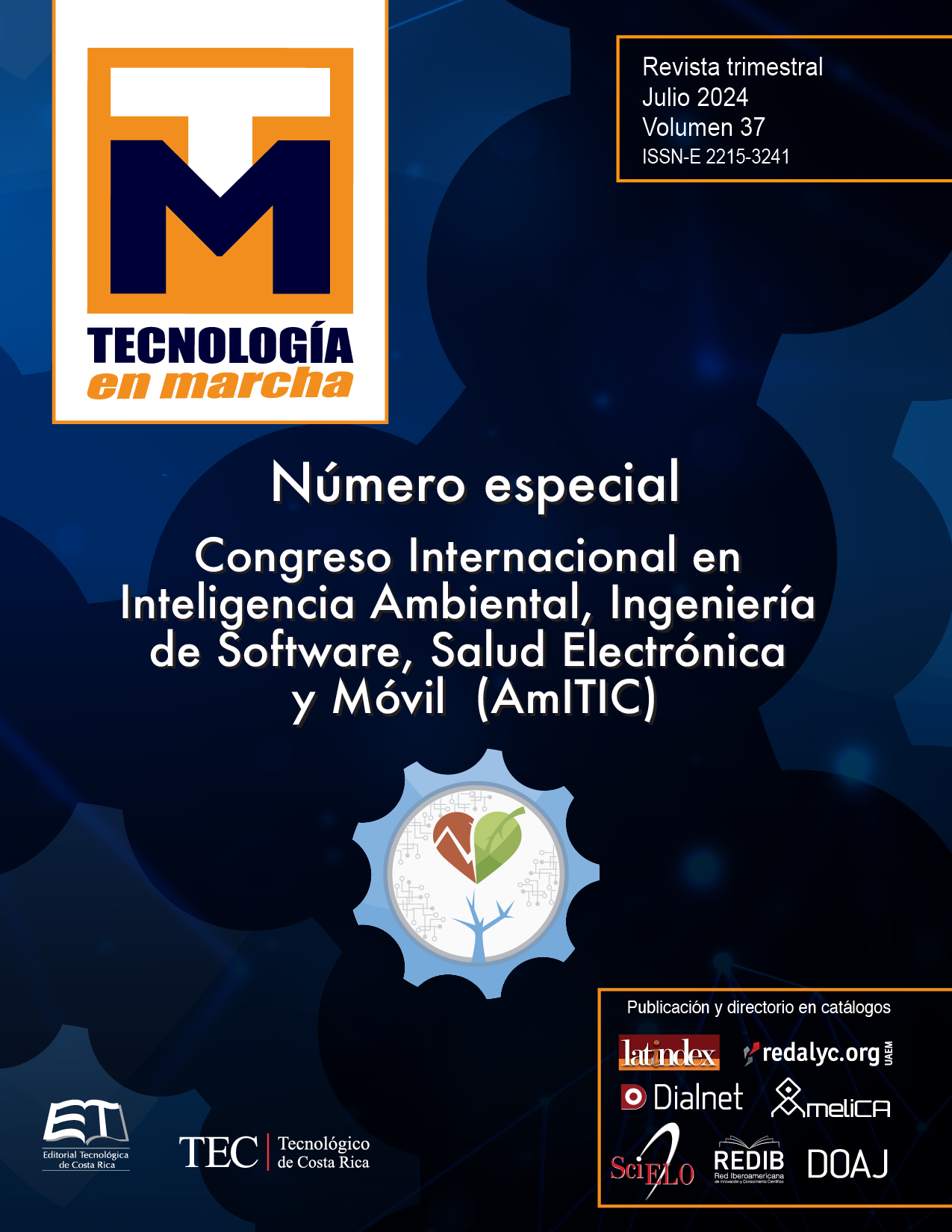Prototype of augmented reality for dyscalculia
Main Article Content
Abstract
This research explores the potential of augmented reality (AR) to revolutionize higher education, specifically in the case of students with dyscalculia. Through an agile methodology, a group of systems engineering students present their first steps in designing a software prototype that seeks to offer an inclusive and effective learning experience, overcoming the difficulties faced by students with this learning disorder, in the area of mathematics.
Article Details

This work is licensed under a Creative Commons Attribution-NonCommercial-NoDerivatives 4.0 International License.
Los autores conservan los derechos de autor y ceden a la revista el derecho de la primera publicación y pueda editarlo, reproducirlo, distribuirlo, exhibirlo y comunicarlo en el país y en el extranjero mediante medios impresos y electrónicos. Asimismo, asumen el compromiso sobre cualquier litigio o reclamación relacionada con derechos de propiedad intelectual, exonerando de responsabilidad a la Editorial Tecnológica de Costa Rica. Además, se establece que los autores pueden realizar otros acuerdos contractuales independientes y adicionales para la distribución no exclusiva de la versión del artículo publicado en esta revista (p. ej., incluirlo en un repositorio institucional o publicarlo en un libro) siempre que indiquen claramente que el trabajo se publicó por primera vez en esta revista.
References
Escobar , J., & Tenorio , M. (s.f.). M. Tenorio. M. Tenorio, 33(5), 473-479. doi:https://doi.org/10.1016/j.rmclc.2022.08.001, 2022.
Kaura , D., Mantria, A., & Horan, B. (2020). Enhancing Student Motivation with use of Augmented Reality for Interactive Learning in Engineering Education. Procedia Computer Science, 172(1), 881- 885. doi:https://doi.org/10.1016/j.procs.2020.05.127
Lewis, K., Thompson , G., & Tov, S. (2022). Screening for Characteristics of Dyscalculia: Identifying Unconventional Fraction Understandings. International Electronic Journal of Elementary EducatioN, 14(3), 243-267. doi:https://files.eric.ed.gov/fulltext/EJ1338818.pdf
Pivetti, M., Battista, S., Agotolio, F., Simaku, B., Moro, M., & Menegatti, E. (2022). Educational Robotics for children with neurodevelopmental disorders: A systematic review. Heliyon, 6(1), 51-60. doi:https://doi.org/10.1016/j.heliyon.2020.e05160, 2020
GrodotzkI, J., Müller, B., & Tekkaya, A. (2023). Introducing a general-purpose augmented reality platform for the use in engineering education. Advances in Industrial and Manufacturing Engineering, 6(1), 100-1006. doi:https://doi.org/10.1016/j.aime.2023.100116
Fonseca Tamayo, F., & López Tamayo, P. (2021). Desarrollo del proceso de enseñanza-aprendizaje y el tratamiento al cálculo aritmético en escolares con discalculia. EduSol, 21(76), 100-109. Obtenido de http://scielo.sld.cu/scielo.php?script=sci_arttext&pid=S1729- 80912021000300100
Al-Zoubi, S., & Al-Adawi, F. (2019). Effects of instructional activities based on Multiple Intelligences Theory on academic achievement of Omani students with dyscalculia. J. Educ. Gift. Young Sci, 7(1), 1-14.
Bugden, S., Peters, L., Nosworthy, N., Archibald, L., & Ansari, D. (2021). Identifying children with persistent developmental dyscalculia from a 2‐min test of symbolic and nonsymbolic numerical magnitude processing. Mind Brain Educ, 15(1), 88-102.
Bird, R. (2021). Overcoming dyscalculia and difficulties with number. London: Corwin UK. Obtenido de https://uk.sagepub.com/en-gb/eur/home
Ziadat, A., Department of Special Education , D., Princess Rahman College, Al-Balqa Applied University, & Jordan. (2022). Sketchnote and working memory to improve mathematical word problem solving among children with dyscalculia. Int. J. Instr, 15(1), 509-526.
Yoong, S., Ahmad, N., Swaran Singh, C., & Wong, W. (2023). The design and development of a dyscalculia checklist based on a focus group interview. Br. J, Spec. Educ, 50(3), 403-412.
Lucangeli, D. (2019). Metacognition and errors: the impact of self-regulatory trainings in children with specific learning disabilities. ZDM, 51(4), 577-585.
Guyzmán, B., Rodríguez, C., Sepúlveda, F., & Fer, R. (2019). Sentido numérico, memoria de trabajo y RAN: una aproximación longitudinal al desarrollo típico y atípico de niños chilenos. Revista de Psicodidáctica, 24(1), 62-70. doi:https://doi.org/10.1016/j.psicod.2018.11.002
Freire, A. G. (2021). La discalculia en alumnos de la educación básica. Sociedad & Tecnología, 4(3), 62-72. doi:https://doi.org/10.51247/st.v4i3.147
Ozcakir , B., & Cakiroglu , E. (2021). An Augmented Reality LAn Augmented Reality Learning Toolkit for Fostering Spatial Ability in Mathematics Lesson: Design and Development. European Journal of Science and Mathematics Education, 9(4), 9(4),145-167. https://doi.org/10.30935/scimath/11204. doi:https://doi.org/10.30935/scimath/11204

